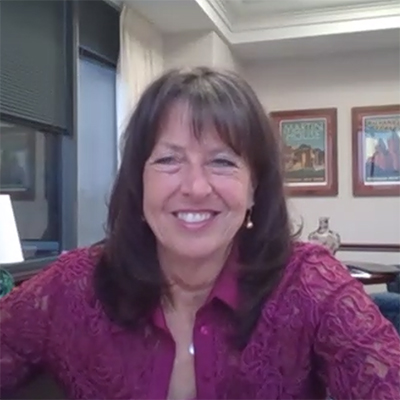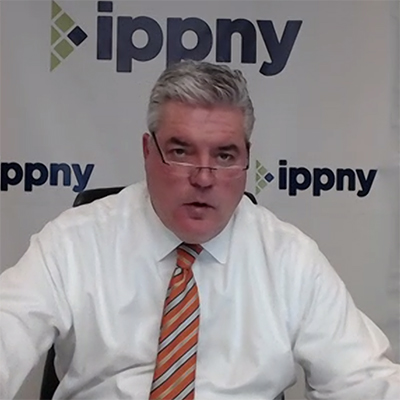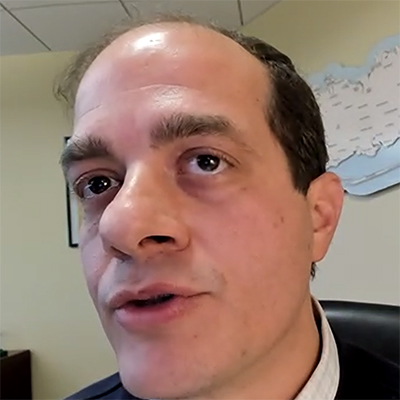
New York officials on Monday tweaked the state’s draft scoping plan on climate action to include cost/benefit and consumer impacts analyses as soon as possible.
 Donna L. DeCarolis, National Fuel Gas Distribution | NYDPS
Donna L. DeCarolis, National Fuel Gas Distribution | NYDPS“To wait until after implementation to assess impact seems too late,” Donna L. DeCarolis, president of the National Fuel Gas Distribution Corp., told the state’s Climate Action Council.
The CAC will meet Dec. 20 to vote on a final draft scoping plan for achieving the goals laid out in the Climate Leadership and Community Protection Act; the plan will be discussed over the course of 2022 before implementation the following year. Monday’s meeting was an ad hoc extension of a Nov. 30 session that ran out of time. (See NY Predicts 200K+ New Clean Energy Jobs by 2030.)
Several council members asked that energy affordability and consumer pricing impacts be included within the draft scoping plan, but the integration analysis that provides the overall economy-wide costs doesn’t actually get to the ratepayer impacts, said Sarah Osgood, executive director of the council.
“In order for us to get to the ratepayer impacts you need to have specific details on a policy, and since we’re not at that level of detail staff is recommending that specific ratepayer costs would be identified as part of a subsequent implementation process,” Osgood said.
Lack of Data?
The council was asking for feedback in relation to a proposed resolution essentially saying that it cannot at this point in time include ratepayer cost impacts of every particular policy that’s included in the scoping plan, Osgood said.
 Sarah Osgood, NYCAC | NYDPS
Sarah Osgood, NYCAC | NYDPSKnown costs certainly could be articulated in the draft scoping plan, said Gavin Donohue, president and CEO of the Independent Power Producers of New York.
“There are recommendations where I would readily admit that we maybe don’t know the cost today, but where we have recommendations that the NYSERDA [New York State Energy Research and Development Authority] or the Public Service Commission can determine the actual customer cost, I think that should be analyzed to be part of a scoping plan,” Donohue said. “Without that I think it’s a real incomplete report and a disservice to the public.”
Much robust cost and impact analysis is happening in New York, but the council should push for better coordination between state agencies to gain macro efficiencies, said Raya Salter of NY Renews.
 IPPNY CEO Gavin Donohue | NYDPS
IPPNY CEO Gavin Donohue | NYDPSThe PSC can look into affordability and macro efficiencies that can be captured, but it’s a challenge to fit these critical pieces into the plan correctly in the next week or so, Salter said. The process would also be helped by the council getting an update from the Climate Justice Working Group on the definition of what constitutes a disadvantaged community, she added.
Osgood agreed to put that update on the Dec. 20 agenda.
“We have not yet resolved the question of who would ultimately pay for some of these initiatives and or policies,” council Co-chair and NYSERDA CEO Doreen Harris said. “We not only have to analyze the costs themselves, but also the question of who is paying is a related challenge.”
A compromise could be that when the council’s work reaches the point of a specific regulatory proposal, it recommends that there has to be a specific ratepayer assessment at that time, said Anne Reynolds, director of the Alliance for Clean Energy New York.
Calculating Benefits
Several council members reminded their colleagues that cost/benefit analysis included the word “benefit,” and that sometimes the benefits will outweigh the costs.
 LIPA CEO Thomas Falcone | NYDPS
LIPA CEO Thomas Falcone | NYDPSFor example, installing air-sourced heat pumps will drive customer electric bills up because they’re using more electricity, but their heating bill will go down, said Thomas Falcone, CEO of the Long Island Power Authority.
“At least on Long Island, even at today’s natural gas prices and oil prices, there’s a huge benefit to moving to electrification,” Falcone said. “About 40% of Long Island customers use oil heat, and if you move those oil heat customers to an air-source heat pump, it saves them a ton of money.”
Total energy use goes down rapidly with heat pumps, and that’s why the emissions are going down, said Robert Howarth, professor of ecology and environmental biology at Cornell University.
“I just want to highlight that because it’s exactly the same case that beneficial electrification applies equally in the heating sector and in the transportation sector,” Howarth said.


